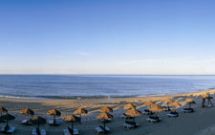Évora - Accessible Tour
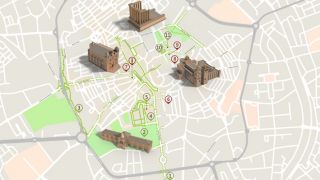
Founded in Roman times, Évora's golden age started when it was chosen as the residence of kings and nobles in the 15th century. This historical importance, which is reflected in the built heritage, and the fact that it became established as a centre of science and knowledge with the creation of the University in the 16th century led UNESCO to classify it as World Heritage, which justifies yet another visit.
It is a city whose conditions let us define an accessible itinerary between the different points of interest since most of the streets are not particularly steep. Nonetheless, certain obstacles mean that a wheelchair visit must be accompanied, tactile pavement is not found everywhere in the city and the sound warnings on pedestrian crossings, most of which have lowered kerbs, are sporadic.
Follow this itinerary with the map
Praça do Giraldo - Church of Santo Antão (7) - Évora Cathedral (8) - Forum Eugénio de Almeida (10) - Roman Temple (11) - Évora Museum (9) - Church of Graça (6) - Church of São Francisco (5) - Municipal Garden and the Palace of D. Manuel (2) - Ermida de São Brás (1)
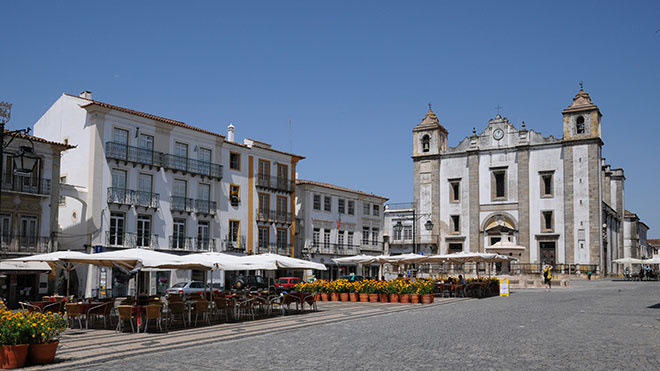
Photo: Praça do Giraldo, Évora by Pack-Shot / Shutterstock
A visit to Évora naturally starts in the Praça do Giraldo, the centre of the city and the very best meeting point. The pavement in the historic centre is in a good state of repair, on the whole, with wide pedestrian streets and central corridors of granite slabs that make it easy to get around. You can thus avoid the commercial obstacles there, such as esplanades and outdoor displays.
At one end of the square you'll see the Church of Santo Antão and a fountain, both dating from the 16th century. Going up the steps at the entrance, the interior of the church is spacious and we can readily appreciate the sacred art of the high altar, particularly the paintings and the gilt carvings. Outside, note the marble drinking fountain, with five spouts, one for each street leaving the square.
Starting the first route, take the accessible Rua 5 de Outubro to get to the cathedral, one of the most iconic monuments in the city with its two asymmetrical towers. The Gothic cathedral, the largest in Portugal, has steps, uneven parts and obstacles, both at the entrance and inside and this makes the visit harder for people with reduced mobility. Returning to the Rua 5 de Outubro and the Largo do Marquês de Marialva, head towards the former Palácio da Inquisição (Inquisition Palace), today the Fórum Eugénio de Almeida, a partly accessible cultural venue. Close by is the Roman Temple, one of the city's most important monuments, with an accessible outer area, and the Évora Museum which has areas adapted for people with reduced mobility and assistance services for visually impaired people.
Returning to the Praça do Giraldo, it's possible to take a second route by going down the Rua da República. On the right is the Largo da Graça, with a mannerist church of the same name, where the entrance presents the problem of having one step. As it is a fine example of the architecture of the period it's worth a visit. At the top of the corners are four robust Atlas-style figures that symbolise four rivers. Local people call them the "Children of Grace”. Getting back to the Rua da República, on the left we find the Praça 1º de Maio where the Gothic Church of São Francisco stands. The entrance is accessible and moving around inside is possible thanks to the ample, obstacle-free spaces. There is just one step at the entrance to the remarkable Chapel of Bones, constructed in the 17th century.
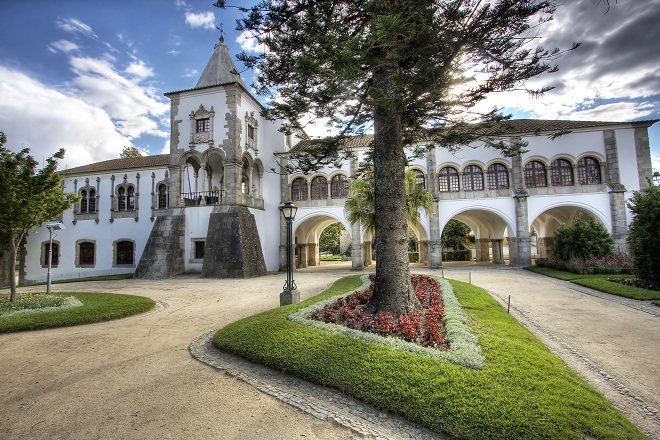
Photo: Palácio de D. Manuel, Évora by André Gonçalves / Shutterstock
From there you can get into the Municipal Garden and the Palace of D. Manuel. This is a really pleasant public area where you can rest and relax for a bit. The end of the garden marks the former city limit and one of the entrances in the wall. Going along Rossio, the route finishes in the Ermida de São Brás, built in the 15th century and one of the first examples of Manueline-Mujdéjar architecture, widespread in Alentejo where the Arab presence left significant influences.
Évora is a welcoming city with a long history, where each stroll, no matter how simple, can turn into a discovery either because of the details that you find in the oldest buildings and the manor houses, or thanks to other points of heritage interest, not to mention the youthful, relaxed spirit that the university bestows on the city.




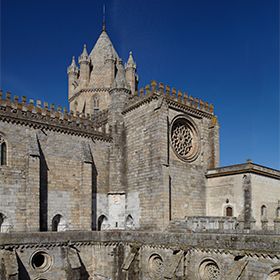
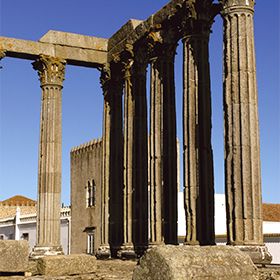
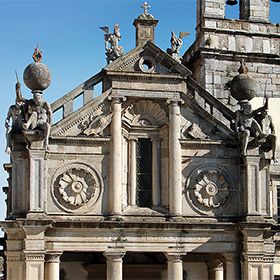
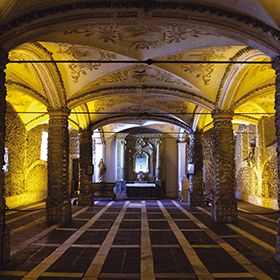
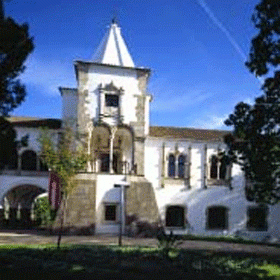
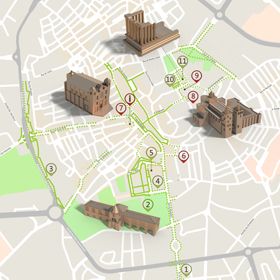


 Explore
Explore 
 Remember and Share
Remember and Share 

